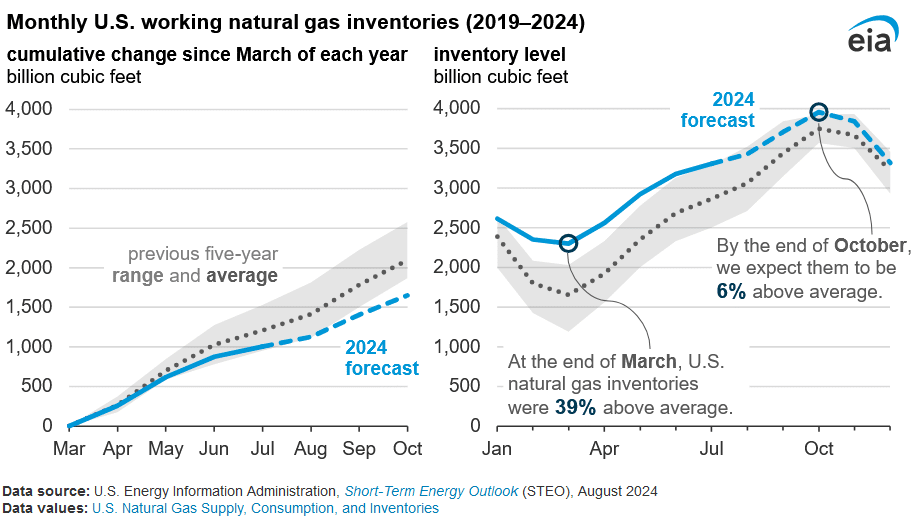U.S. Storage Levels Projected to End Injection Season at Multi Year Highs: EIA

U.S. natural gas storage levels are projected to be at 3,954 billion cubic feet (Bcf) by Oct. 31, 2024, according to an Aug. 7 report published by the U.S. Energy Information Administration. This will be the highest storage level at the end of the injection season since November 2016.
As of the end of March 2024, U.S. gas storage levels were 39 percent above the previous five-year average. The agency expects storage levels to be only six percent above the previous five-year average, as of the end of October. The slowdown in the rate of inventories builds will be due to gas injections into storage sites being at a five-year minimum in all regions across the U.S. during the remainder of the injection period. The agency expects lower than average injections for the remainder of the injection season, due to already high gas stocks, relatively flat gas production and higher gas usage during the summer.
U.S. gas storage levels at the end of March 2024, were relatively high. The supply and demand fundamentals in the market are a key driver of gas storage injections in any given year. Above seasonal normal temperatures during the winter period led to lower gas demand for household consumption and as a result less gas was withdrawn from storage sites to fulfil domestic demand. Due to the already high storage levels, injection demand is projected to be lower throughout the summer period.
U.S. gas stocks follow a seasonal trend usually increasing in April until October, due to low consumption during the summer period. In contrast, U.S. gas stocks decline during the November to March period, amid higher consumption due to colder temperatures. The South-Central region is an exception to this trend, as gas is occasionally withdrawn from storage sites during the summer.
Underground U.S. gas storage capacity is around 4,796 Bcf as of May 2024. One-third of the capacity is located in the South-Central region, whilst the Midwest accounts for 26 percent of capacity. The East has 23 percent of total underground U.S. gas storage capacity. Alaska, the Pacific region and the Mountain region together account for the remaining 19 percent of capacity.
EnerKnol Pulses like this one are powered by the EnerKnol Platform—the first comprehensive database for real-time energy policy tracking. Sign up for a free trial below for access to key regulatory data and deep industry insights across the energy spectrum.
ACCESS FREE TRIAL